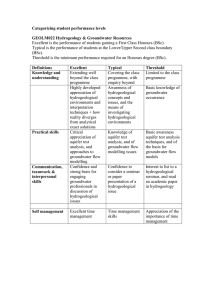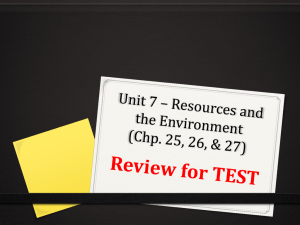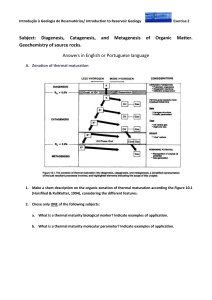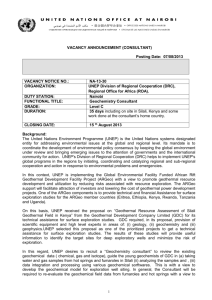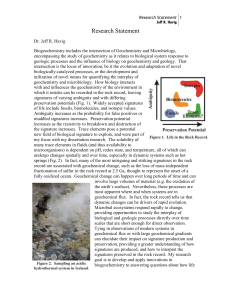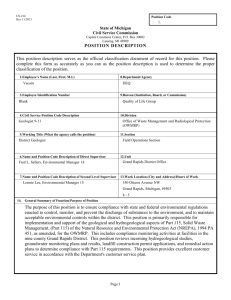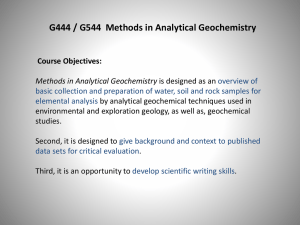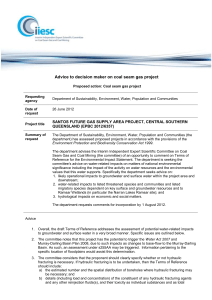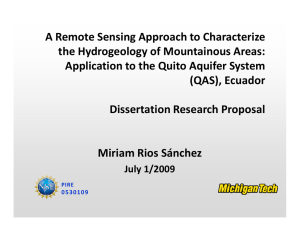Abstract - TU Bergakademie Freiberg
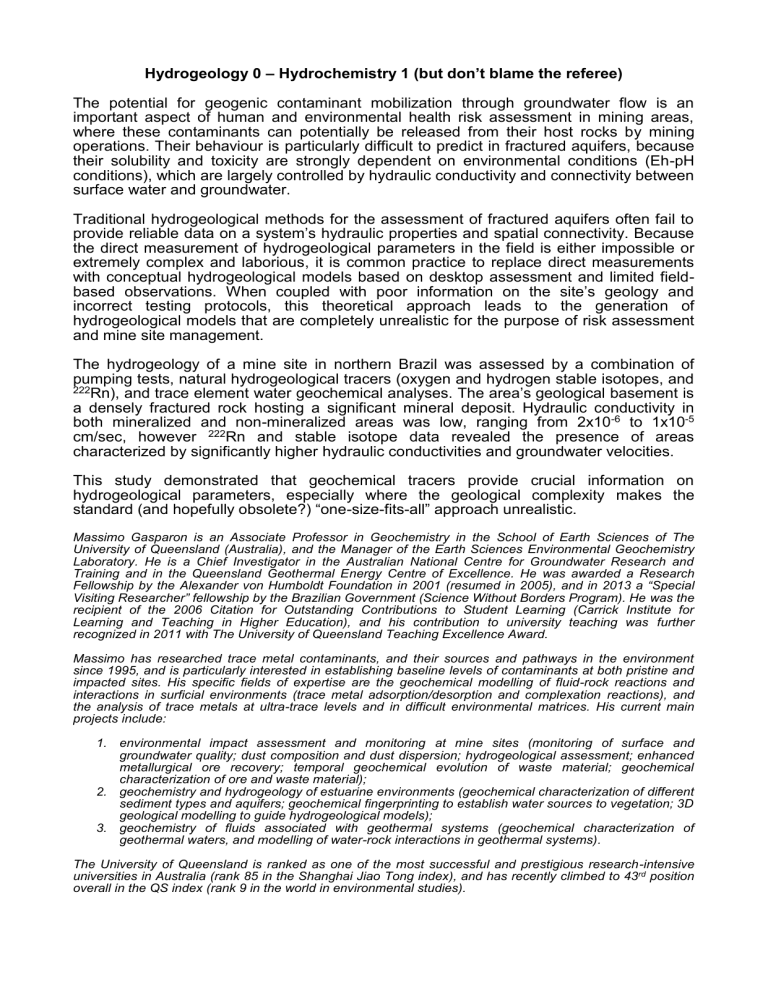
Hydrogeology 0
– Hydrochemistry 1 (but don’t blame the referee)
The potential for geogenic contaminant mobilization through groundwater flow is an important aspect of human and environmental health risk assessment in mining areas, where these contaminants can potentially be released from their host rocks by mining operations. Their behaviour is particularly difficult to predict in fractured aquifers, because their solubility and toxicity are strongly dependent on environmental conditions (Eh-pH conditions), which are largely controlled by hydraulic conductivity and connectivity between surface water and groundwater.
Traditional hydrogeological methods for the assessment of fractured aquifers often fail to provide reliable data on a system’s hydraulic properties and spatial connectivity. Because the direct measurement of hydrogeological parameters in the field is either impossible or extremely complex and laborious, it is common practice to replace direct measurements with conceptual hydrogeological models based on desktop assessment and limited fieldbased observations.
When coupled with poor information on the site’s geology and incorrect testing protocols, this theoretical approach leads to the generation of hydrogeological models that are completely unrealistic for the purpose of risk assessment and mine site management.
The hydrogeology of a mine site in northern Brazil was assessed by a combination of pumping tests, natural hydrogeological tracers (oxygen and hydrogen stable isotopes, and
222 Rn), and trace element water geochemical analyses. The area’s geological basement is a densely fractured rock hosting a significant mineral deposit. Hydraulic conductivity in both mineralized and non-mineralized areas was low, ranging from 2x10 cm/sec, however
-6 to 1x10 -5
222 Rn and stable isotope data revealed the presence of areas characterized by significantly higher hydraulic conductivities and groundwater velocities.
This study demonstrated that geochemical tracers provide crucial information on hydrogeological parameters, especially where the geological complexity makes the standard (and hopefully obsolete?) “one-size-fits-all” approach unrealistic.
Massimo Gasparon is an Associate Professor in Geochemistry in the School of Earth Sciences of The
University of Queensland (Australia), and the Manager of the Earth Sciences Environmental Geochemistry
Laboratory. He is a Chief Investigator in the Australian National Centre for Groundwater Research and
Training and in the Queensland Geothermal Energy Centre of Excellence. He was awarded a Research
Fellowship by the Alexander von Humboldt Foundation in 2001 (resumed in 2005), and in 2013 a “Special
Visiting Researcher” fellowship by the Brazilian Government (Science Without Borders Program). He was the recipient of the 2006 Citation for Outstanding Contributions to Student Learning (Carrick Institute for
Learning and Teaching in Higher Education), and his contribution to university teaching was further recognized in 2011 with The University of Queensland Teaching Excellence Award.
Massimo has researched trace metal contaminants, and their sources and pathways in the environment since 1995, and is particularly interested in establishing baseline levels of contaminants at both pristine and impacted sites. His specific fields of expertise are the geochemical modelling of fluid-rock reactions and interactions in surficial environments (trace metal adsorption/desorption and complexation reactions), and the analysis of trace metals at ultra-trace levels and in difficult environmental matrices. His current main projects include:
1. environmental impact assessment and monitoring at mine sites (monitoring of surface and groundwater quality; dust composition and dust dispersion; hydrogeological assessment; enhanced metallurgical ore recovery; temporal geochemical evolution of waste material; geochemical characterization of ore and waste material);
2. geochemistry and hydrogeology of estuarine environments (geochemical characterization of different sediment types and aquifers; geochemical fingerprinting to establish water sources to vegetation; 3D geological modelling to guide hydrogeological models);
3. geochemistry of fluids associated with geothermal systems (geochemical characterization of geothermal waters, and modelling of water-rock interactions in geothermal systems).
The University of Queensland is ranked as one of the most successful and prestigious research-intensive universities in Australia (rank 85 in the Shanghai Jiao Tong index), and has recently climbed to 43 rd position overall in the QS index (rank 9 in the world in environmental studies).

